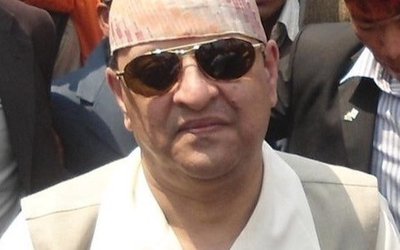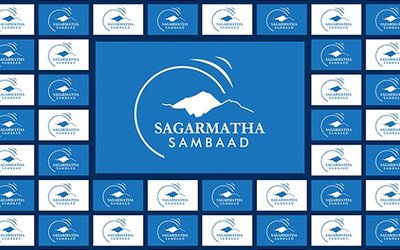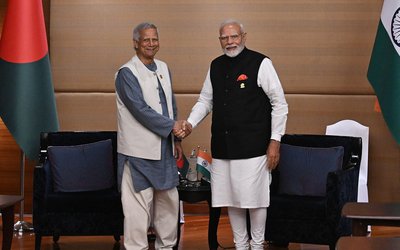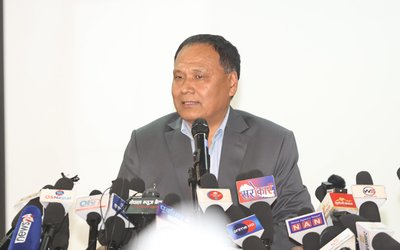Post-Dussain hangover invites reflecting on the larger canvas of Nepal’s problems. With gastronomic orgies over and savings across the land having evaporated, the grim tally of liabilities loom ahead like a Himalayan massif in moonlight. But no amount of blinking can wish it away like an unwanted apparition. Whether it is families or the country itself, the Loktantrick hangover is real. Nepal is in a mess: it has no government and the little of it that does function has no budget; its parliament’s mandate expired four months ago; its interim constitution does not function; it has no electricity, water, passports, civilian security and other prerequisites of civilization. Even worse, there is no seriousness among the leaders of major parties (it makes little sense to talk of the voiceless party serfs in parliament or outside) to address the grave political issues that need sorting out before the country can have a new constitution; and the chances of having that is dwindling fast to zero.
It was during the Dussain lull that one read of Nepali Kangress announcing its need to rethink its foreign policy because foreigners and the UN no longer seem to trust it. Would that they were more worried about the Nepali people losing faith in them; but heaven knows there is nothing wrong with Kangress’s stated, half-century old foreign policy of equidistance with giant neighbours, neutrality and respect for rule of law. The problem, and the lack of trust it gives rise to, is in its practice: Kangress has functioned as a craven doormat to Mughlani and donor whims, whether they be in water resources or extra-judicial extradition, passport printing or Bhutani refugees, to say nothing of sleeping with strange political bedfellows at Mughlani behest!
A better gem of contradiction came from Baburam Bhattarai. Speaking in Dhangadhi, he bemoaned the fact that Nepal’s imports were higher than exports because of the stranglehold of a feudal production system on Nepal’s economy. He probably needs to pack up his holy texts of mantra-incanting Marxist catechisms and read what is actually transpiring on the ground. But before getting to that, a small digression. A few months back, I happened to share a podium with former finance minister Madhukar Rana at a gathering of mostly economists in Annapurna hotel. A question was put to him asking what he thought of the widely propagandized saying that Baburam Bhattarai was best finance minister Nepal ever had, presumably because he collected the highest amount of revenue. Rana’s reply and subsequent discussions are worth summarizing.
A good finance minister not just collects revenue but also effectively disburses development funds, and Baburam’s record on this front is a measly 12%. His high revenue collection was not because he improved the government’s revenue management system but through three questionable means. A few months before the expiry of the voluntary disclosure of income scheme, he had finance ministry officials make YCL-style extortion calls to business houses threatening to put them on merciless scanners if they did not cough up. He opened up licenses to import billions worth of gold as well as new cars (both of which provided bulk import tax revenue, the latter also increasing petroleum imports and the former mostly eating up Nepal’s foreign exchange reserves to feed India’s voracious appetite for the yellow metal). Just look at Nepal Oil Corporation’s figures for the last three years: Nepal’s diesel and petrol imports have doubled, thanks to Baburam’s fiscal policies.
The question is: let alone Green or Mao Think, what principle of Marxist political economy of production is this? As with the Maoist-led government’s 10,000MW hydropower export policy, these economic measures will not make Nepal a self-reliant economy. Rather, they have led to capital flight, increased labour outmigration and Nepal slipping towards a neo-colonial remittance economy. We have had manpower and raw material export policy since 1885 when Bir Sumshere allowed Gurkha recruitment and the export of Nepali timber to build the Indian railways. So what revolutionary policy did you bring about in your nine-month tenure, Comrade, that could beat the UML’s “Build Your Village Yourself” campaign?
If one left aside his party persona and compulsions (but how can one leave out what defines him publicly?), I have found Baburam to be personally quite honest. I recall a Mulyankan interaction at the Thapathali campus in the early flush of the 1990 democracy. Some of us, including economist Kishor Gurugharana, were arguing how it was the rent-seeking propensities of our state structure that generated pathologies such as Arun-3 which would cost the Nepali consumers four times the going market rates. Baburam stepped into the debate pontificating that what we called rent-seeking was the same as his Marxist “neo-feudal, neo-colonial”. We had to remind him that it was not, that political economy had come a long way since Marx, and that one could not go very far in analyses with those terms. Baburam had the courage to come up to us during the tea break and admit that full-time politics had taken a toll on his academic readings. Wish he could re-think development philosophy as honestly.
In reality, with decades of hindsight it can be said that the much-maligned Rana feudal Juddha Sumshere as well as the Panchayat system were more serious about taking Nepal down the industrialization path and job creation for its youth. The former’s first industrial exhibition in Nepal in 1938 and his letter to Churchill seeking the Raj’s support for tariff concessions for products to come out of Nepal’s industries are proof enough. The Panchayat under King Mahendra did set up production factories that the Kangress was quick to close down after 1990 in the guise of privatization. By the 1980s, the feudal aspect of the Nepali economy had dwindled to insignificance and the country’s state apparatus had slipped into the hands of the trading class comprador bourgeoisie, a fact that seems to be appreciated, among the current political class, only by the marginal ‘Third Current’ group within the UML. It is also corroborated by the main parties, socialists and communists both, nominating scions of trading houses to the Constituent Assembly. How could they not, since the bulk of their unaccounted party funding comes from this source and not transparent levies.
Understanding this shift matters if one is to make sense of today’s Nepali politics. Unlike production-oriented industrial capital that worries about raw material, labour, infrastructure and legal inducements for efficiency, the trading class is only interested in shortages that can be met by imports. If the Bansbari shoe factory closes down, so the much the better: more shoes can be imported! If hydropower plants are not built to meet Nepal’s crippling load-shedding and PPAs are not signed (because of party trade union pressures) with Nepali entrepreneurs willing to invest in building those plants, we can spend our scarce public resources building 400kV lines to import non-existent power from India! And rent-seeking propensities ensure that creating scarcities is, for this class, a sound business strategy, because it would ensure higher selling prices. To enhance this trend, an alliance with the rent-seeking bureaucracy is essential as is keeping the bureaucracy underpaid.
This political economy has driven out Nepali producers. Hotels have closed and turned into shopping malls. Skilled labour is fleeing the country. Doha is said to have 15 thousand Nepali electricians and Japan has about two thousand Nepali restaurants, one at least in every railway station. Labour export, not skill utilization, is big business in Nepal, mostly controlled by the brass of big parties. Milovan Djilas’s New Political Class, like the Soviet Nomenclatura, is very much alive in Nepal today. Having driven out the wealth-creating industrious bees, the methane-producing termites have taken over and live off the rakings of extortions from those that remain.

Dipak Gyawali
Gyawali is Pragya (Academician) of the Nepal Academy of Science and Technology (NAST) and former minister of water resources.
- Re-Thinking Democracy: Why South Asians Are worried
- Mar 17, 2025
- Nepal’s Governance Mired In Endemic Corruption
- Feb 20, 2025
- What Might The Age Of Trump Look Like?
- Jan 22, 2025
- Kathmandu Dialogue With Dugin
- Dec 25, 2024
- Bioregionalism Satsang
- Sep 27, 2024














